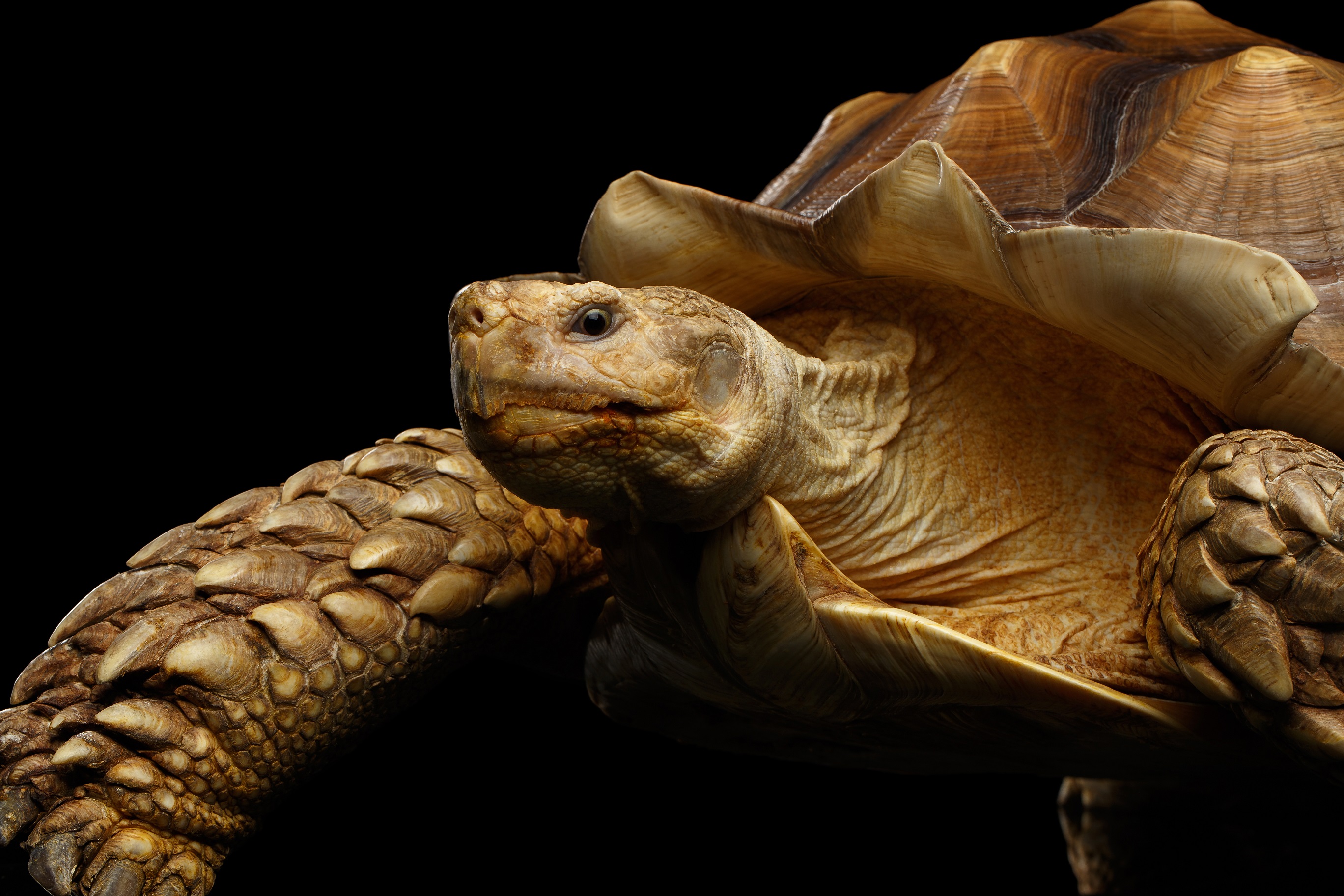Shell Games
Pet Age Staff //April 12, 2017//
By Jennifer Higgins
Because tortoises and turtles are both categorized under the order Chelonian, they share many of the same physical, nutritional and behavioral characteristics. However, there are several differences. Due to their respective natural environments in the wild, tortoises and turtles must be maintained in captive habitats that accommodate their diverse needs and should be managed or cared for with these differences in mind.
“Tortoises and turtles have become more popular amongst both reptile hobbyists and novices alike over the past 10 to 15 years,” said Bruce Cohen of Delaware Turtle, a turtle and tortoise breeder and supplier. “Tortoises seem to be enjoying more repute than turtles these days.”
This may be due to the different environments in which each must be kept and possibly because turtles are known for being slightly less tolerant of handling and “taming” than tortoises are. However, any lack in a turtle’s desire to snuggle is made up in their ability to display more dynamic and captivating behaviors as they go from water to land and back again.
Regardless of which one comes out on top, popularity breeds demand, and that means pet store owners will want to stock and display tortoise and turtle products that meet the growing needs and wants of their customers. Specialized nutritional, light, temperature and humidity needs of both turtles and tortoises are paramount.
Much like other reptiles, turtles and tortoises are not able to physically regulate their body temperature and must move from cool to warm areas as their daily temperature requirements dictate. For turtles, it is important that they are provided with a structure that allows them to easily remove themselves from the water to regulate their temperature. This can be accomplished by providing them with a basking rock or platform. Zilla’s Basking Platform Filter serves two purposes in one arrangement as it is both a basking platform and a water filter. As with any aquatic animal, water filtration is extremely important for their health as well. Zoo Med offers its Turtle Clean Canister Filter with a spray bar for added aeration, a key component in premium water filtration.
Lights, Heat, Action!
In their natural environment, turtles and tortoises are automatically provided with one of the most important components for optimal health and growth: ultraviolet (UV) light. In fact, both UVA and UVB light must be provided. UVA lighting is important for activity level, feeding and breeding while UVB plays a key role in the production of vitamin D3.
“The proper heat for each species, known as the preferred optimal temperature zone (or POTZ), will vary for each species,” said Dr. Colin McDermott, who specializes in veterinary medicine for exotics at Mount Laurel Animal Hospital. “For the tortoises, this can be achieved through a system of heat bulbs, ceramic heat emitters, basking bulbs and heating pads. Temperatures should be monitored with multiple thermometers throughout the enclosure to properly assess the temperatures at all times. Heat sources should also be available at night, to keep the night temperatures at the appropriate range.”
Because of the importance of this lighting, there exists a wide variety of specialized light products for both turtles and tortoises. Many of these include a tandem heat component as well. Zoo Med has an Aquatic Turtle UVB & Heat Lighting Kit which, when paired with the Zoo Med Reptile Lamp Stand and Zoo Med Combo Pack Turtle Lamp, takes care of all heat and light needs. However, if keepers of tortoises and turtles prefer to keep a heat source lamp on all day and night in a different location for their carapace chums to warm up as needed, Zoo Med carries a Day/Night Light Combo Pack that includes an infrared heat lamp with a light that is red and not visible to turtles and tortoises. Thus, they can get warm without their night’s rest being interrupted. Even the desert dwelling tortoises have varying degrees of need for moisture and humidity.
Creature Comfort
For moisture bearing substrate, there is Zoo Med’s Reptisoil, made up of a mix of peat moss, soil sand and carbon. According to Brendan Anderson, a manager at World Wide Aquarium and Pets in Philadelphia, Pennsylvania, Reptisoil holds moisture very well, stimulates a tortoise’s natural digging behavior and is infused with carbon, allowing the soil to aerate, which helps with drainage. If soaking is a preferred method of moisture procurement, one option is the Zoo Med Repti Ramp Bowl that is formed to allow easy access in and out of the shallow water containment area. This ramp bowl comes in sizes large and extra large and is easy to remove for cleaning.
When it comes to setting up housing for turtles and tortoises, Dr. McDermott stipulates that enclosures and space considerations can vary for different species, even within the turtle and tortoise families.
“Aquatic turtles should, at a minimum, have enough water space that they can freely swim without obstructions,” Dr. McDermott said. “A general rule is to have water deep enough that the turtle can sit up vertically in the water and still be completely submerged, and a length of tank at least three times the length of their shell. Enclosures should be larger for multiple turtles.”
Zoo Med’s Turtle Tub Kit meets these requirements with plenty of space and a quality filtration system.
As with most—if not all—pet store products that create a living, breathing microcosmic pet wonderland, it is to a retailer’s utmost advantage to have a tortoise and turtle habitat completely set up and very visible in their stores. This will boost sales of both pre-stocked habitat kits as well as separate components and features for the creative and fastidious tortoise and turtle hobbyists who want to make it their own.



















